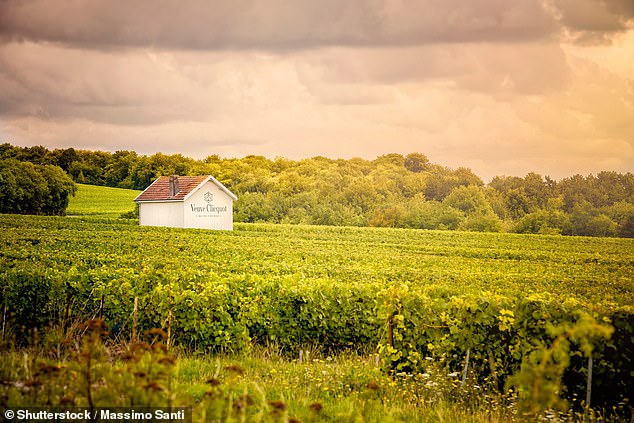France’s champagne-making region to be expanded by 15% as producers look to make up dwindling sales in the face of cheaper competitors
- Districts in the Côteaux de Troyes, near Paris, are expected to join
French champagne producers strictly control where exactly producers can grow their grapes and what methods are involved.
They will quickly undermine the attempts of others to steal their heritage and cache, whether they are the producers of Cava, Crémant or Prosecco.
But with champagne sales declining despite these cheaper competitors, the big houses seem finally willing to open the floodgates.
They have drawn up plans to extend the borders of the official Champagne region by up to 15 percent.
This milestone comes almost 100 years after mayors in eastern France turned down the chance to be part of the extraordinary success story.
French champagne producers strictly control where exactly producers can grow their grapes and what methods are involved. But with champagne sales dwindling in the face of these cheaper competitors, the big houses appear finally ready to open the floodgates (Stock Photo)
Fearing higher taxes and bureaucracy, several farmers decided in 1927 that local farmers would be better off growing grain crops than joining what would later prove to be a guarantee of wealth.
The average price of vineyards in the 319 districts that decided to participate in the Champagne region was €1.06 million per hectare in 2022.
In contrast, the land price in the districts that withdrew was about 1 percent of that.
Maxime Toubart, president of the General Union of Champagne Winemakers, has said his organization is prepared to expand the official champagne production area by up to 15 percent.
It is expected that neighborhoods in the Côteaux de Troyes, close to Paris, will be allowed to join.
However, the plan to expand the champagne production zone has divided the region.
Proponents argue that the emergence and spread of the disease flavescence dorée, which can devastate vines, means there is a need for new vineyards. Others fear that increased production will lead to a glut, causing prices to fall.

The average price of vineyards in the 319 districts that decided to participate in the Champagne region was €1.06 million per hectare in 2022. In contrast, the price of land in the districts that decided not to participate in the Champagne region was around 1 percent of that (Stock Photo)
A new official champagne producing map is expected at the end of this year, while members of the champagne union will vote on it next year.
It comes as drinkers appear to be increasingly switching from Champagne to the cheaper Crémant.
Sales of the sparkling French wine – which is produced in the same way as champagne but matured for a shorter period – reached a record of 96 million in 2021.
